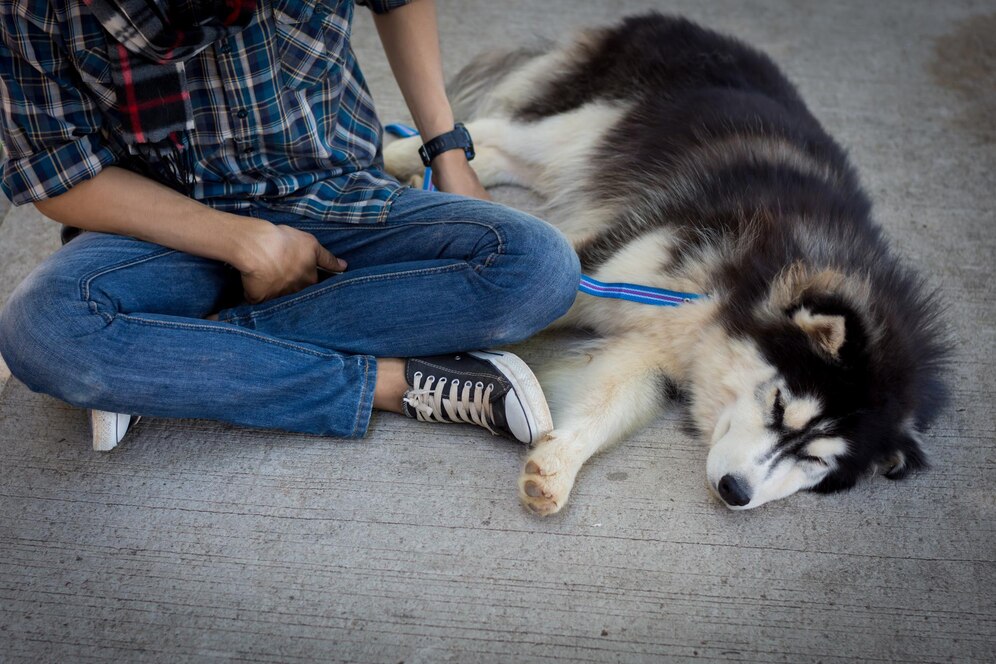Introduction
As pet owners, our furry, feathered, and scaly companions are more than just animals—they’re family. We love them unconditionally and do everything we can to keep them safe and happy. But one of the biggest challenges of caring for a pet is recognizing when they’re in pain. Unlike humans, pets can’t tell us what hurts or how they feel. Instead, they rely on behavior, subtle body language, and physical changes to express discomfort. This guide will help you identify the signs your pet may be in pain and show you how to take action quickly to ensure their well-being.
Why Pets Hide Pain
Evolutionary Reasons
In the wild, animals who show signs of weakness can become targets for predators. This instinct has carried over into our domesticated pets. Many animals will instinctively hide their pain to avoid appearing vulnerable, making it even more important for pet owners to be vigilant.
Species-Specific Behavior
Each species—and even different breeds—may exhibit pain differently. Dogs may vocalize or become aggressive, while cats often become withdrawn. Birds and reptiles may show almost no outward signs until they’re critically ill.
General Behavioral Changes to Watch For
1. Decreased Activity
If your energetic dog suddenly becomes lethargic, or your playful cat starts sleeping all day, take note. A drop in energy levels is a common sign that something may be wrong.
2. Personality Shifts
Changes in temperament—such as increased aggression, irritability, or withdrawal—can indicate pain. A friendly pet who suddenly avoids contact might be trying to protect a painful area.
3. Appetite Loss
Pain often causes pets to lose interest in food or water. Monitor their eating and drinking habits, and contact your vet if changes last more than a day or two.
4. Changes in Grooming Habits
Pets may groom excessively in one spot or stop grooming altogether. Either behavior can signal discomfort or pain.
Physical Signs of Pain
1. Limping or Stiffness
One of the most obvious signs, especially in dogs, is limping or favoring one limb. Cats may be less obvious but may avoid jumping or walking.
2. Posture Changes
A hunched back, head hanging low, or reluctance to lie down can all indicate pain.
3. Panting and Labored Breathing
Dogs pant to cool down, but panting when at rest could be a sign of pain. Cats rarely pant; if they do, it often signals a serious issue.
4. Facial Expressions
Subtle changes such as squinting, droopy eyes, or flattened ears can reveal discomfort.
Species-Specific Signs of Pain
| Species | Common Signs of Pain |
|---|---|
| Dogs | Whimpering, licking wounds, tucked tail, aggression |
| Cats | Hiding, decreased grooming, aggression, avoiding litter box |
| Rabbits/Rodents | Teeth grinding, hunching, dull coat, inactivity |
| Birds | Fluffed feathers, sitting at bottom of cage, poor balance |
| Reptiles | Swollen limbs, skin discoloration, hiding, lack of appetite |
Pain Across Life Stages

Young Pets
- Pain may show as restlessness or excessive crying.
- Watch for growth-related issues like hip dysplasia.
Adult Pets
- Prone to injuries from activity.
- Monitor for chronic issues like skin infections or allergies.
Senior Pets
- Arthritis, dental disease, and organ issues are common.
- Signs include reduced mobility, weight changes, and incontinence.
Common Causes of Pain in Pets
1. Injuries and Trauma
Fractures, cuts, bruises, and sprains are all potential causes.
2. Dental Disease
Tooth decay, gingivitis, or abscesses can be incredibly painful but hard to detect.
3. Arthritis and Joint Issues
Common in older pets, arthritis causes stiffness and reluctance to move.
4. Internal Illnesses
Kidney disease, pancreatitis, and cancer often present with vague pain symptoms.
5. Post-Surgery Pain
Even with pain meds, recovery from surgery can be uncomfortable.
Diagnosing Pain in Pets
Veterinary Tools and Tests
Vets use physical exams, X-rays, blood tests, and ultrasound to pinpoint the source of pain.
Owner Observations
Keep a pain diary and share videos or notes with your vet. Your input is valuable for diagnosis.
What to Do If You Suspect Pain
1. Don’t Delay
Time is crucial. Early intervention prevents worsening conditions.
2. Avoid Human Medications
Never give pets over-the-counter pain relievers without vet approval—they can be toxic.
3. Comfort Your Pet
Keep them calm and in a quiet place. Minimize handling until a vet can examine them.
4. See Your Veterinarian
Only a professional can confirm the cause and recommend safe treatments.
Treatment Options

Medications
- NSAIDs, opioids, and steroids (veterinarian-prescribed)
- Topical creams for localized pain
Natural and Holistic Options
- CBD oils (vet-recommended)
- Acupuncture
- Herbal supplements
Physical Therapy
- Hydrotherapy
- Massage
- Mobility aids like ramps or orthotics
Surgical Interventions
- Joint replacements
- Tumor removals
- Corrective procedures for injuries
Preventing Pain in Pets
1. Routine Vet Checkups
Annual or bi-annual visits help catch issues early.
2. Proper Nutrition
A balanced diet supports immune and joint health.
3. Weight Control
Obesity puts stress on joints and organs.
4. Environmental Adjustments
Use ramps, orthopedic beds, and pet-safe furniture to reduce strain.
Real-Life Case Studies
Case 1: Max the Labrador
Max began limping slightly. His owner thought it was minor until Max avoided stairs. A vet diagnosed early arthritis, and now Max thrives with medication and hydrotherapy.
Case 2: Bella the Cat
Bella started hiding and stopped grooming. A vet visit revealed a painful dental abscess. After treatment, Bella returned to her affectionate self.
Case 3: Rocky the Rabbit
Rocky ground his teeth and sat hunched. The vet found a urinary infection. With antibiotics, Rocky bounced back quickly.
Helpful Tools for Monitoring Pet Health
| Tool | Purpose |
|---|---|
| Pet health journals | Track symptoms and changes |
| Mobile apps (e.g. Pawtrack) | Log vet visits, medications, symptoms |
| Smart collars | Monitor activity and vitals |
FAQs
Q: Should I wait a day before going to the vet if my pet shows symptoms?
A: No. If you notice signs of pain, it’s always better to act quickly.
Q: Can I use essential oils for pain relief?
A: Only with vet approval. Some oils are toxic to pets.
Q: How can I tell if it’s just aging or pain?
A: Aging is natural, but persistent changes in behavior or movement often indicate pain.
Conclusion
Your pet trusts you completely. Being aware of the signs of pain is one of the most compassionate things you can do as a pet owner. From subtle behavior changes to more visible physical symptoms, every clue matters. The sooner you detect and address pain, the better your pet’s chance at recovery and comfort.
Stay proactive. Stay informed. And most importantly, stay connected with your pet—they’re counting on you.
